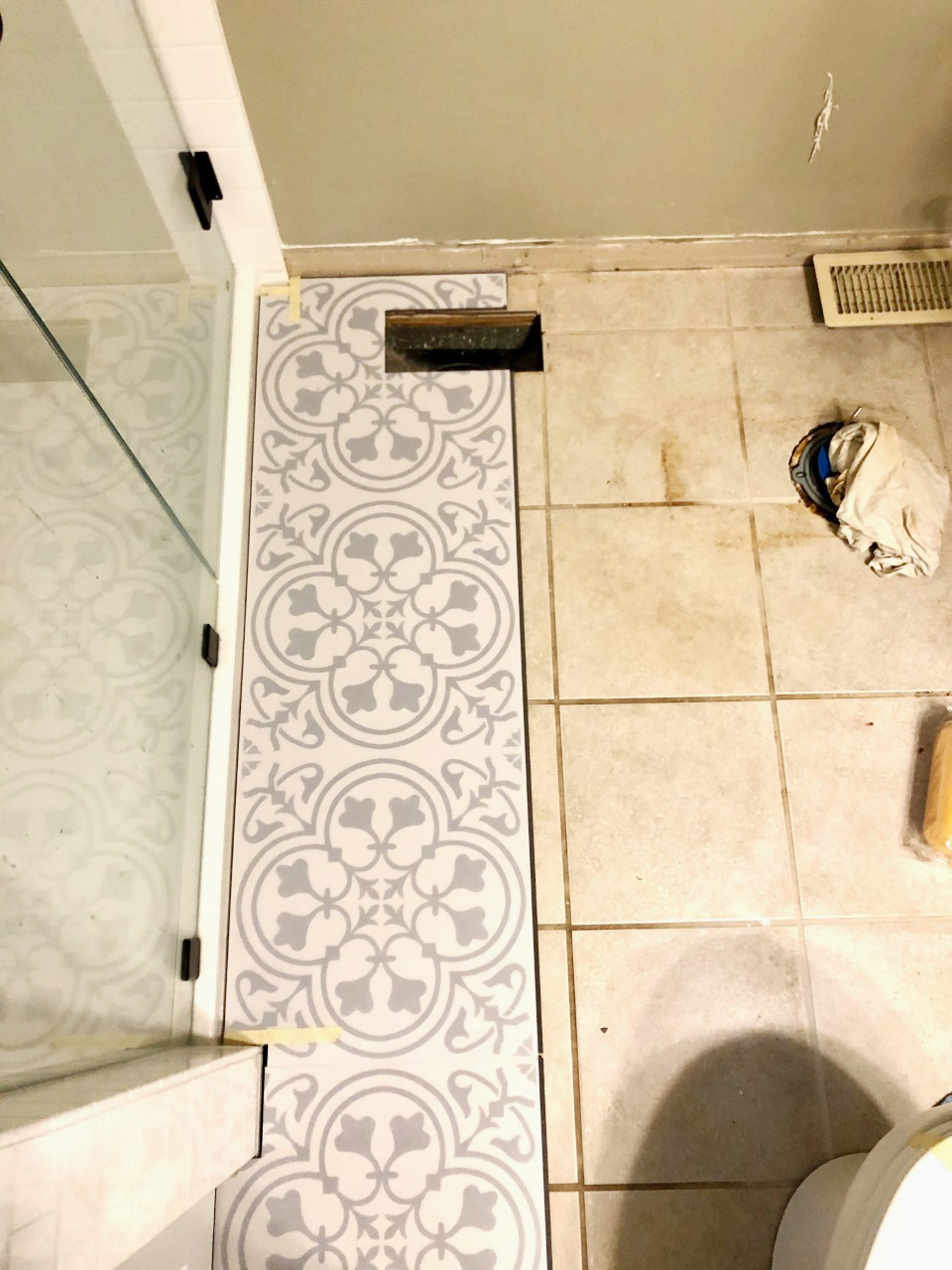Imagine walking into your kitchen, your eyes drawn to the dated ceramic tiles that have been there for years. You envision a fresh, modern look – maybe a warm, inviting wood-look vinyl floor. But can you achieve this transformation without tearing out the existing tiles? The answer, thankfully, is often yes!

Image: phenergandm.com
Laying vinyl flooring over ceramic tiles poses a unique challenge, but with careful planning and execution, it’s a project within reach. This guide will delve into the complexities of this endeavor, providing you with the knowledge and confidence to make an informed decision.
Understanding the Feasibility of Vinyl Flooring Over Ceramic Tile
The feasibility of laying vinyl flooring over existing ceramic tile depends on multiple factors, including the tile’s condition, your chosen flooring type, and your desired outcome. Let’s break down these considerations.
The Condition of Your Existing Tile
- Surface Evenness: Vinyl flooring requires a smooth, even surface for a seamless installation. Ceramic tiles are notorious for uneven grout lines and potential cracks or chips. These inconsistencies can create a bumpy surface, leading to uneven wear and tear on your vinyl flooring.
- Tile Adhesion: Ensure the existing ceramic tiles are firmly secured to the subfloor. Loose tiles create an unstable foundation, jeopardizing the longevity of your vinyl flooring.
- Tile Grout: Grout lines can be challenging for vinyl flooring installation. The vinyl may not lie flush against the grout, creating gaps and potentially affecting the overall look.
Types of Vinyl Flooring
- Sheet Vinyl: This type of vinyl is typically glued down and requires a smooth, flat surface. Installing sheet vinyl over ceramic tiles can be tricky due to unevenness.
- Luxury Vinyl Plank (LVP) and Luxury Vinyl Tile (LVT): These options are often click-lock or glue-down. They offer more flexibility than sheet vinyl, but the existing tile surface must be prepared appropriately.
- Self-Adhesive Vinyl: While these tiles are easy to install, they are not always suitable for uneven surfaces. They can also be susceptible to damage if not installed properly.
Desired Outcome and Budget
- Appearance: If you’re striving for a perfectly seamless transition between the vinyl and the ceramic tile, you may face limitations. The vinyl floor could look raised or uneven at the transition points.
- Cost: Removing existing tile can be labor-intensive and expensive. Laying vinyl flooring directly over the tile can be a more cost-effective solution.
Preparation is Key: Ensuring a Successful Vinyl Flooring Installation
Before laying down your chosen vinyl, thorough preparation is paramount.
- Assess Your Ceramic Tile: Carefully evaluate your existing ceramic tile, examining its condition for cracks, loose tiles, or unevenness. If you discover any issues, addressing them before installation is crucial.
- Clean Thoroughly: Dirt, debris, and grease can interfere with your vinyl flooring’s adhesion. Clean the tile surface thoroughly using a degreaser and a damp cloth. Allow the floor to dry completely before proceeding.
- Address Unevenness: If your ceramic tiles are uneven, consider using a self-leveling compound to create a smooth surface. This ensures a flat and even foundation for your vinyl flooring.
- Choose the Right Underlayment: The purpose of underlayment is to enhance the comfort and performance of your vinyl flooring. Choose a suitable underlayment depending on the type of vinyl you’re using. A foam underlayment can aid in smoothing out minor irregularities in the ceramic tile surface.
- Grout Lines: For sheet vinyl installation, you may need to fill in the grout lines using a patching compound to create a seamless surface. Consider purchasing pre-cut pieces of vinyl flooring to avoid cutting and fitting around grout lines, especially if you’re using LVP or LVT.
Expert Tips for Successful Installation
- Professional Assessment: Consult with a flooring specialist to determine the feasibility of installing vinyl flooring over ceramic tile in your specific circumstances. They can offer valuable insights and guidance.
- Leveling Compound: A thin layer of leveling compound can help smooth out minor imperfections in the ceramic tile surface. However, apply it sparingly, as excessive thickness can prevent the vinyl from laying flat.
- Using Transition Strips: Transition strips create a smooth transition between the vinyl flooring and the ceramic tile. They help hide any minor discrepancies in height and provide a finished look.
- Adhesive and Bonding: Use a high-quality adhesive specifically designed for vinyl flooring on tile. This ensures strong adherence and prevents the vinyl from lifting or peeling.
- Professional Installation: If you’re concerned about the complexities of installation, consider hiring a professional flooring contractor. Their expertise ensures a successful outcome and minimizes potential problems.

Image: www.artcomcrea.com
Can You Put Vinyl Flooring Over Ceramic Tile
Conclusion: Achieving a Modern Look without a Major Overhaul
Laying vinyl flooring over ceramic tile is a viable solution for modernizing your space without the hassle of complete removal. By carefully assessing the condition of your tiles, preparing the surface, and choosing the right vinyl type and installation method, you can achieve a stylish and durable floor. While installing vinyl over tile can present unique challenges, with the right preparation and guidance, it can be a rewarding and cost-effective way to revitalize your home.
Remember, seeking professional advice is crucial for informed decision-making. Embrace this opportunity to explore the world of vinyl flooring, unleashing your creativity, and creating a space that reflects your unique style.






